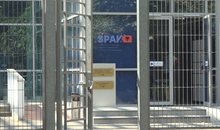
 Flash News
Flash News
4 cars collide in Fier, two people injured
He was carrying a weapon in his apartment! A person was arrested in Maliq
BIRN: Parliament resumes work, removing the floor from the opposition
Checks in Durrës prison, 10 cell phones seized, used by convicts
New Parliament/ 82 MPs who will be absent from September
The Ishëm River carries tons of plastic waste and hospital waste into the sea, 2 million euros in the "trash"
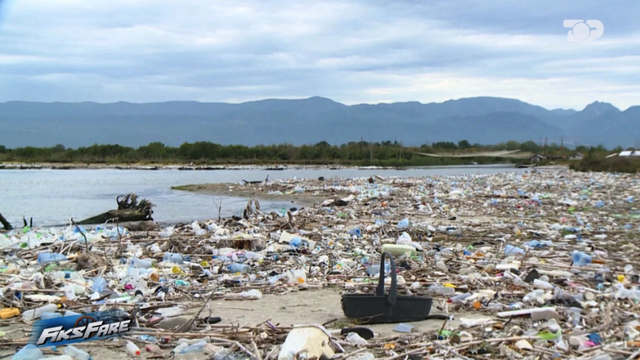
Fiks Fare denounced on Wednesday evening an environmental massacre in the Adriatic Sea, at the mouth of the Ishëm River.
Tons of plastic and hospital waste have invaded a long coastline, on both sides of the Ishmi Delta. The situation was alarming, as no state authority, whether local or central, had intervened to minimize this massacre.
On the contrary, these institutions are also responsible for the non-functioning of a cleaning plant on the Ishëm River, which was supposed to collect waste so that it did not end up in the sea. In 2017, an investment worth 2 million euros was made to clean the river from plastic waste, but it has not worked for a single day. The entire investment has been thrown away, while the estuary has turned into a veritable landfill, where you can find all kinds of waste. Hospital waste was in abundance, on the Adriatic coast.
The Fiks Fare group traveled to the mouth of the Ishëm River. The garbage and waste were spread over a very large area, with colossal pollution. Plastic waste has invaded the entire seashore.
But where does that waste come from?
The Ishëm River flows through Central Albania and is 74 km long; the basin area is 673 km2 and the average altitude above sea level is 357 m. It is formed by the confluence of the Tirana River, where the waters of the Lana also flow. Meanwhile, the Ishëm River is joined by two streams, the Tërkuza and the Zeza. Its delta is located near Cape Rodoni, where the waters flow into the Adriatic Sea.
The malfunction of the plant, which was supposed to collect plastic waste a few kilometers from the mouth of the Ishmi, has brought about all this environmental massacre. Meanwhile, in all that sandy and marine surface, in addition to plastic waste and other waste, there is also hospital waste.
The entire area had been transformed into a huge landfill, where you can find all kinds of waste. The Fix camera filmed the Ishmi Delta, full of plastic bottles, plastic waste. But the most scandalous thing was that on the seashore, or even in the waters of the Adriatic, you can find dozens of hospital waste.
The situation was alarming, to the extent that no institution, whether local or central, had taken action for years. Both sides of the Delta, one belonging to the Municipality of Kurbin and the other on the side of Cape Rodoni (Protected Area) belonging to the Municipality of Durrës, had not been cleaned and maintained. The waste was spread over a huge maritime line, on both sides of the Delta.
Meanwhile, Fiksi also traveled to the village of Gotull in Kurbin, about 2 kilometers before the Ishëm River flows into the sea. There, a plant was built to prevent river waste from ending up in the sea.
According to documents available to Fiks Fare, in January 2017 a study was carried out for the facility “Ishëm River Estuary Cleaning Plant and Coastal Requalification, Kurbin”. The document explains that the purpose is to retain and collect solid and plastic waste. “The system is composed of two recovery stations, located about 10 meters from each other,” the documents stated.
According to them, it was determined that the conveyor belt collection system would be installed at the point where the two peaks of the barrier meet. The second station consists of two floating dams placed about 10 meters apart.
The tender documents also have photos of what the entire plant should look like. A voluminous environmental impact assessment was also carried out and then the tender was announced.
The tender was opened in February 2017 by the Ministry of Environment for the construction of the plant. The awarded value was 204 million lek, or about 2 million euros. The duration of the works was only 6 months, but delays led to the plant being inaugurated only in the fall of 2019. Fiksi has been following this issue continuously, where if we compare the project, how it was done and how it is now, it seems that all the money has been thrown away.
The plant was inaugurated by the then ministers of the environment, who declared that “the project aimed to clean the river and the Adriatic Sea.” But about 8 years later, the situation is the same, as plastic waste continues to flow into the sea, with the Išćem River being one of the most polluted.
Currently, in 2025, the main door of the plant is locked. There is no machinery, or even mechanisms. Currently there are only some rusty metal devices. Nature has taken its course!/ Top Channel
Latest news




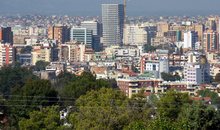
BIRN: Billions missing in economic growth
2025-05-29 22:14:22

Judge's brother bribed prosecutor, worked with gangs, and returned to work
2025-05-29 21:40:15
From Shijak to Lushnje, Berisha shows the armed gangs that helped the SP
2025-05-29 21:29:19


Berisha: Why did Rama hand over the Port of Durres to the Troplini cartel?
2025-05-29 21:08:01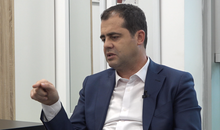
Bylykbashi: This electoral system should have disappeared in 2020, it's not 2008
2025-05-29 20:47:04

KAS decides to open a box in a VC in Vlora
2025-05-29 20:36:19
Vokshi from the CDI Assembly: Europe must react to the electoral farce of May 11
2025-05-29 20:21:22


4 cars collide in Fier, two people injured
2025-05-29 19:10:12

Lawyer shocked: A sniper was paid by Albania to eliminate Prime Minister Kurti
2025-05-29 18:53:46



Netanyahu accepts US Gaza ceasefire plan, Hamas 'disappointed'
2025-05-29 17:53:48


He was carrying a weapon in his apartment! A person was arrested in Maliq
2025-05-29 16:59:51
Hamas receives new ceasefire proposal from US
2025-05-29 16:58:27


BIRN: Parliament resumes work, removing the floor from the opposition
2025-05-29 16:08:51
Movement in Tirana Police / Crime, road and urban traffic sectors affected
2025-05-29 16:03:00

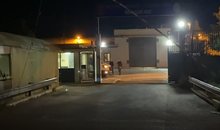

Walnut leaves, learn how to use them for health
2025-05-29 15:26:05
Tirana/ 33-year-old man jumps from the third floor of the building
2025-05-29 15:08:38


Rama appeared alongside Brok, Berisha: Elmar's congratulations to him are ironic
2025-05-29 14:47:06
UN: Russia's drone attacks in Kherson, Ukraine, constitute war crimes
2025-05-29 14:37:56
Lek deposits decreasing for the second consecutive month
2025-05-29 14:34:19

Three people involved in drug trafficking are extradited to Italy
2025-05-29 14:08:06


What do we see when we die? The activity of the dying brain provides some clues.
2025-05-29 13:43:08
DP gathers political leaders at blue headquarters
2025-05-29 13:28:52
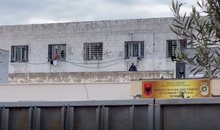
Checks in Durrës prison, 10 cell phones seized, used by convicts
2025-05-29 13:12:14
Banks worried about property prices
2025-05-29 12:58:06
Marriage on paper, Albanian and American woman accused by the US of fraud
2025-05-29 12:47:14

Socialist MP: I would gladly go to jail if a vote was bought
2025-05-29 12:30:58


DP demands 60 minutes of debate in plenary session: Change the agenda
2025-05-29 12:07:53

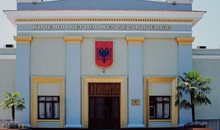
New Parliament/ 82 MPs who will be absent from September
2025-05-29 11:26:35

DP demands repeat elections in Tirana district
2025-05-29 11:09:48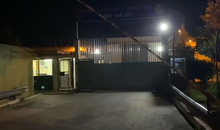



Investigations for Meta, lawyer: SPAK with political agenda
2025-05-29 10:30:41
Sentenced to 1 year in prison, Ervin Salianji requests parole
2025-05-29 10:24:35
SPAK strikes long-standing cigarette smuggling network with Customs' blessing
2025-05-29 10:08:47
Elon Musk leaves the Trump administration
2025-05-29 09:54:09
Accident in Kurbin/ Pedestrian dies after being hit by vehicle
2025-05-29 09:46:26

World Bank Report: 20% of Albanian population in poverty by 2025
2025-05-29 09:31:38

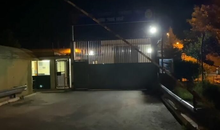

11 things people with high IQs do that they pretend to like, but actually hate
2025-05-29 08:47:46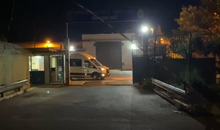
TNT explosion inside the Fushe Kruja prison compound
2025-05-29 08:47:39
Horoscope, what do the stars have in store for you today?
2025-05-29 08:27:39
Fire in the bus park in Lushnja, four of them burned down
2025-05-29 08:12:48
Weather forecast, how temperatures will change during the day
2025-05-29 08:02:11
Morning Post/ In 2 lines: What mattered yesterday in Albania
2025-05-29 07:48:20

DP official: International reaction to the elections expected within two days
2025-05-28 22:43:54


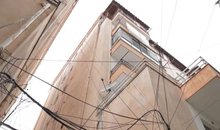



Marco Rubio warns of massive visa freezes for foreign officials
2025-05-28 21:12:04

DP demands the repetition of the elections in the region of Fier
2025-05-28 20:52:44


Government, 5 million euros to build a luxury dog hotel
2025-05-28 20:01:58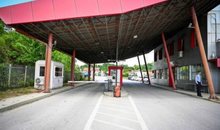

Trump: Will know in two weeks whether to end Ukraine war after Putin call
2025-05-28 19:40:52
